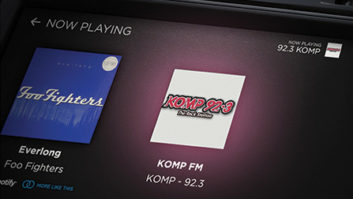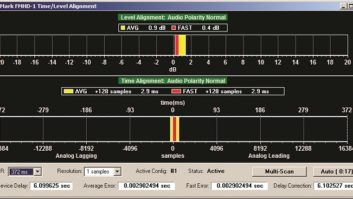The value of the subcarrier
Oct 1, 2003 12:00 PM, By Kevin McNamara, CNE
The FCC originally enacted the Subsidiary Communications Authority(SCA) in 1955. In 1983, the FCC eliminated the licensing requirementfor SCAs that subsequently permitted radio stations to use theirsubcarriers to broadcast essentially anything. Prior to that, they wereprimarily voice-type services that included reading services, foreignlanguage broadcasts and, lest we forget, the static and hiss ladensounds of the background music services (elevator music). After thisruling, stations could host a variety of new emerging services usingnot only analog voice information, but also data transmissions.Companies such as Cue Paging and Bonneville Data began to franticallynegotiate leasing arrangements with stations in the top 50 markets. Ina short time, these companies were broadcasting a variety ofsubscription-tailored data to end-users. The data included custom news,sports, weather, stock/commodity info and messaging/paging. The valueof a subcarrier lease began to climb, particularly to those stationswith the largest coverage footprint within their market. Of course,several stations in each market were locked into long-term contractswith the background music services for a fraction of the money offeredby the data services.
The Microsoft SPOT watch displayssubcarrier data from two stations in a market.

In 1993, the Radio Broadcast Data System (RBDS) standard wasintroduced as a means of using the subcarrier to broadcast specificinformation that permits a receiver to tune stations based on formatand provide traffic, program and emergency broadcast information. Thereceiver manufacturers supported the effort and began to rolloutreceivers shortly thereafter. While several stations continue tobroadcast RBDS, it doesn’t appear to be used to the level for which itwas originally intended. Because the individual stations initiate RBDS,it provides no monetary value.
In 2003, most, if not all, of those services are no longer inexistence. They have been replaced by emerging terrestrial services,such as PCS/cellular, that can provide all of a users information needswithin a single pager-type receiver and with a virtually contiguousnational footprint. Background music services have moved tosatellite-based delivery, where it can also offer a much wider range ofcontent, as well as other data services. Analog reading services stillwidely use FM subcarriers; however, from a value standpoint, it doesnot present a significant monetary impact, as these are typicallyprovided by a station free or at minimal cost.
Alternative data delivery
Wireless data delivery is without doubt the hottest field intelecommunications and the computer industry. The FCC has recognizedthis and has been continuously working to develop new spectrum that cansupport this fast growing industry. Let’s face it, subcarriers haveproblems � one-way only transmission, multipath issues, limitedbandwidth, signal-to-noise issues, reduced RF footprint (related to themain carrier), poor performance penetrating buildings and a lack ofsubcarrier-specific receivers. As a practical matter, the SCA is anarrow alternative for the transmission of data.
Value is driven by demand. In the case of a subcarrier, we need tolook at alternative delivery methods. As a society, we have grownaccustomed to having all of our information readily available in oneplace. The wireless carriers have generally done a good job respondingto this need by integrating voice, messaging and data into a singlephone or PDA device.
Additionally, the advent of unlicensed spectrum that can be used forwireless Ethernet transmissions are opening up yet another alternativemeans to gather information remotely. WiFi hot-spots are continuouslybecoming available in venues where people eat, relax or otherwise havetime to use their laptop computer or any Web-enabled device to send andreceive e-mail.
A new kind of SPOT
If you want to know who is investing money into FM subcarriers, lookno further than the computer giant Microsoft. It seems that Bill Gateshas a vision to provide a full suite of information to a user’s watchusing FM subcarriers. Microsoft will create a nationwide subcarriernetwork called Direct Band that is expected to cover the top 100metropolitan areas in all 50 states and 13 Canadian cities. The networkwill use subcarriers from two stations in each city and with anexpected throughput of 12kb/s. The software behind this concept iscalled SPOT, or Smart Personal Objects Technology, which can delivernot only the usual news, sports, weather, traffic and time, but alsowill permit the user to customize the watch face�definitelysomething everybody has wanted.
Providing data in addition to the audiois a subcarrier function that is being carried over to DAB.

Traditional data delivery
As an alternative to satellite-delivered data services, MainstreamWireless markets real-time data delivery via FM subcarrier. The abilityto broadcast data to locations that cannot install external receiveantennas due to local zoning restrictions is its major advantage. Whileit sounds like a viable application, the size and form-factor ofsatellite antennas are becoming almost invisible and it is likely notto trigger jurisdictional reviews, so why not just use the satellitereceiver?
A company called C3 Technologies is developing a technology usingthe FM subcarrier. One such application is called Claricast DigitalWireless Voicemail System. This is a technology that sends subscribersvoicemail using FM subcarriers. Here is an interesting application thatcould prove to be an opportunity for broadcasters. The company is alsoworking on data broadcast applications in the military, homelanddefense and public service sectors.
Stratosaudio is another company that is embracing RBDS technology byproviding services to create station branding, listener interaction andchannel commerce opportunities. The RBDS-ready receiver is theconsumer’s front end, while a cell phone or Web browser is the backend.
IBOC and the subcarrier
The advent of digital radio will bring a mixed bag of opportunitiesand losses for broadcasters. Broadcasters currently leasing the 92kHzsubcarrier will likely lose that revenue stream or face the need toreplace existing receivers.
Companies such as Impulse Radio will permit broadcasters to leveragethe data stream into new forms of business � selling and managingmultiple data streams. The applications Impulse Radio uses as examplesinclude: program-associated data, on-demand programming, time-shifting,telemantics, commerce, listener interaction, subscription, supplementalaudio, messaging, electronic program guide and Emergency Alert System.Think RBDS on steroids and without the subcarrier.
McNamara is president of Applied Wireless, Elkins Park,PA.











